#Jain Classes
Explore tagged Tumblr posts
Text
Bank PO Exam Preparation: 3 months study plan
Preparing for the Bank PO (Probationary Officer) exam requires a well-structured and focused study plan.
Here's a suggested 3-month study plan for Bank Exam Preparation to help you maximize your preparation:
Month 1: Foundation and Basics
1. Week 1-2: Understand the Exam Pattern and Syllabus
- Familiarize yourself with the structure of the exam, including the number of sections, marking scheme, and duration.
- Gather information about the syllabus for each section.
2. Week 3-4: Review the principles and fundamentals.
- Review basic concepts in quantitative aptitude, reasoning, and English language.
- Identify weak areas and prioritize topics based on your understanding.
3. Week 5-6: Start with Quantitative Aptitude
- Begin with quantitative aptitude, covering topics such as arithmetic, algebra, and geometry.
- Solve a variety of problems to build your speed and accuracy.
4. Week 7-8: Focus on Reasoning Ability
- Dedicate time to mastering reasoning topics like puzzles, seating arrangement, and logical reasoning.
- Practice solving different types of problems to enhance your logical thinking.
Month 2: In-Depth Preparation
1. Week 1-2: Intensive Study of English Language
- Concentrate on grammar rules, vocabulary, and comprehension skills.
- Read newspapers and articles to improve reading comprehension.
2. Week 3-4: Comprehensive Study of General Awareness
- Stay updated on current affairs, especially banking and economic news.
- Study static GK topics and practice quizzes to reinforce your knowledge.
3. Week 5-6: Revise and Practice Mock Tests
- Begin taking full-length mock tests to simulate exam conditions.
- Analyze your performance and identify areas for improvement.
4. Week 7-8: Fine-Tune Weak Areas
- Focus on weak areas identified during mock tests.
- Solve additional practice questions and seek clarification on doubts.
Month 3: Revision and Final Preparation
1. Week 1-2: Full-Length Mock Tests and Revision
- Take full-length mock tests regularly to enhance your time management skills.
- Revise all subjects and focus on quick problem-solving techniques.
2. Week 3: Last-Minute Revision and Strategy Refinement
- Review formulae, important concepts, and shortcut methods.
- Refine your exam strategy based on the feedback from mock tests.
3. Week 4: Relaxation and Confidence Building
- Take it easy in the last few days before the exam.
- Focus on staying calm, confident, and well-rested.
Remember to maintain a healthy balance between studying and taking breaks. Stay consistent with your study routine, and seek help if you face challenges in any specific topic. Good luck with your Bank PO exam!
Get more detail about Bank Coaching in Jaipur contact us.
#Best Bank Coaching Guidence#Best Bank Coaching in Jaipur#Best Bank Coaching institute in Jaipur#Best Bank PO Coaching in Jaipur#Study plan for Bank PO Exam#Tips for Bank Coaching#Tips for Bank po Exam Preparation#Jain Classes#Jaipur
0 notes
Text
Meet woman, who is a trained doctor, cracked UPSC to become IAS officer
Tanu Jain, a trained doctor who became a popular IAS officer after clearing the UPSC exam, recently resigned from her position. Growing up in a middle-class family, her interest in civil service was piqued by a relative's guidance. Jain completed her Bachelor of Dental Surgery and subsequently pursued UPSC preparation, motivating many aspirants through her mock interviews and speeches. Despite her success, she chose to leave the IAS role after a few years.
#Tanu Jain#Trained doctor#IAS officer#UPSC exam#Civil services#Resigned IAS#Bachelor of Dental Surgery#Middle-class background#Motivational speeches#Mock interviews#Career transition#UPSC aspirants
0 notes
Text
Aditya Jain Classes: Decoding the Financial Narrative
0 notes
Text
Jain muni attacking directly to the whole community of dancers as claming that choreographers are mainly bad in character due to some incidents happened in Pune or Mumbai.
Hello my is Hitesh mohan founder of dance asia plus from Delhi – it looks so stupid where thousands of people sitting in front of Jain muni where he is claiming and blaming the community of choreographers and their character and also trying to show his fake style of energy in terms of aggression by saying – ‘ mere paas aao main sikhaunga daat kaise todne hain ‘ – I think he is filled up with his…
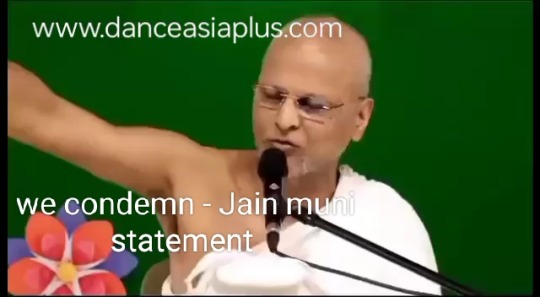
View On WordPress
#acting classes#Aerobics#Aerobics - dance asia plus#art#artist#ballroom dance#choreographer for couple dance#choreographer for destination wedding#Choreographer for Sangeet events#choreographer in india#Choreographer in pitampura#Choreographer in Prashant vihar#choreographer in rohini#Choreographer in Shalimar bagh#Choreographer in West delhi#Choreographer Near Me - delhi#dance choreography#Farah khan#feroz khan#jain community#Jain muni#Jain&039;s#mumbai#news#Pune#remo D&039;Souza#Sagar maharaj
0 notes
Text
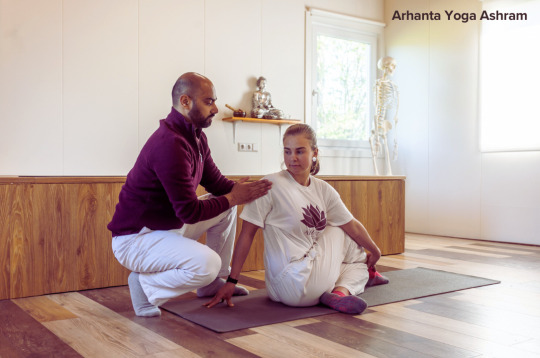
Teaching Yoga Poses in the Class by Yogi Ram Jain
Yogi Ram Jain, a master of yoga, imparts wisdom and grace in his classes. With gentle guidance, he illuminates the art of yoga poses, unlocking their physical and spiritual potential. As students flow through postures, they are nurtured by Yogi Ram's expertise, fostering holistic well-being and inner harmony.
#Yoga Teacher#Yogi Ram Jain#Yoga Instructor#Teaching Yoga#Yoga Teacher Ram Jain#Yoga Classes#Master Yoga Teacher
0 notes
Text
#ias coaching in delhi#best upsc coaching#best faculty for upsc tanu jain#Tathastu ICS#Tathastuics#dr. tanu jain#upscaspirants#upscexam#upsccoaching#upsc#online classes#education#upsc preparation
0 notes
Text
The worst cities in India poll really made me think about Ahmedabad, where I spent a decade of my life, went to school, turned 18, and why it's the worst city in India.
1. It is genuinely the most communally and economically segregated city in India. Muslim residents are forced into ghettoes and all economic opportunities and real estate is seized by upper caste Hindus and Jains. I went to a school in the Hindu part of Ahmedabad and had one Muslim classmate the whole time. There was no Eid holiday.
2. Ahmedabad has a truly vile history of Anti-Muslim pogroms. The 2002 genocide was so horrific beyond words that I don't think there's been that kind of mass destruction in the country except for the Partition.
3. Ahmedabad and its residents facilitate and support Modi, Shah, and the BJP - much of their power came from Ahmedabad, and they are now trying to make UP what Gujarat is.
4. Alcohol is prohibited because Gandhi was born there. This has led to an underground bootlegging culture which disproportionately affects economically disadvantaged populations and leads to many deaths due to spurious alcohol. Also makes for one hell of a boring city.
5. Speaking of Gandhi, the whole city is obsessed with him, and there's a whole tourism economy dedicated to him with no reflection on his racism, casteism, and r*pe.
6. Speaking of tourism, there is absolutely nothing to do or see in the city. It truly has erased whatever culture it had to begin with.
7. This is because the culture is dominated by UC Hindus and Jains and caters to their preferences. Of course it's boring. While they drink alcohol at house parties, the working class folks have to follow rules which of course don't apply to the rich. Restaurants in other cities have alcohol menus, Ahmedabad restaurants have no onion no garlic menus.
8. Unless you study commerce or medicine, there is absolutely nothing for you here in terms of career prospects. Forget trying to stay in Ahmedabad if you studied humanities, because the city has killed the prospect of communities around the arts.
9. There is a very hostile attitude towards non-vegetarian food - I've been told my house smells like fish, I probably eat anything etc etc. Housing communities are illegally "pure veg". Also for everything that gets said about it being safe....try wearing a dress and going out. There is no non veg street food. Food courts don't serve non veg food. This is not normal.
10. Even the "liberal" circuit is painfully elite and gatekeepy.
84 notes
·
View notes
Text
Hi
I am conducting a survey for LGBTQ+ community to know what issues they face in their day-to-day life. The aim is to know how to make public places, work places and institutions more inclusive for them.
please fill the form at your convenience and reblog for a larger sample space. this is for a school project and completely anonymous.
thank you so much.
#the deadline is 1 september#i procrastinate a lot#lgbtq community#lgbt pride#lgbtqia#lesbian#gay#bisexual#pansexual#genderfluid#queer#transgender#this is not perfect so tell me if something may be wrong in the form#i am just going to tag a bunch of fandoms cuz i am on a deadline#supernatural#welcome to night vale#good omens#twenty one pilots#byler#the owl house#umbrella academy#klaus hargreeves
9 notes
·
View notes
Text
Nappinnai in Ponniyin Selvan

Krishna-Nappinnai cult was prominent in Tamil-speaking areas of South India in the seventh to tenth centuries. Nappinnai can be considered a mix of Satya of Ashtabharya and Radha. This cult is the prototype of the later Radha-Krishna cult in the North. She features prominently in the poetry of Alwars (Vaishnavite poet saints) as the worldly wife of Krishna as different from the divine consorts of Lord Vishnu.
In Tamil poetry, Nappinnai is the daughter of Yashoda’s brother Kumbakan. She grew up with Krishna and Balarama and Krishna marries her by taming seven bulls in a public tournament. Nappinnai is featured in non-Hindu sources too. For example, in Jivaka Chintamani composed by the Jain saint Tirutakkatevar, a King is told that he shouldn't hesitate to marry a lower class woman because Tirumal himself is married to cowherdess Nappinnai.
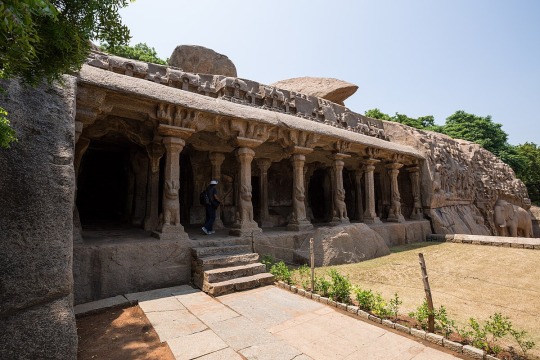
Krishna Mandapam at Mahabalipuram
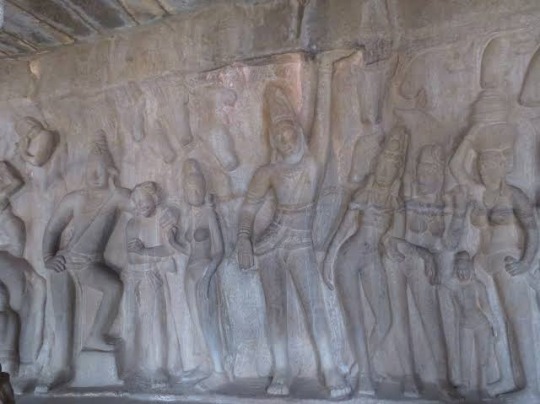
Krishnan lifting Govardhana, Balarama on the right side, consoling an old couple. Nappinnai on the left side gazing at him admiringly, holding the hands of his sister Subhadra.
Aditha Karikalan, Thirukkoilur Malayaman and Parthibendra Pallavan spend their night in this complex near the iconic Shore Temple, at the end of Book 1. The young princes discuss about sculptures and poetry, which Parthibendran finds distasteful. Malayaman leaves them to watch villu pattu in the Pancha ratha complex and it is here that Karikalan narrates the story of his heartbreak. Now it is a closed structure, but originally it was an open air bas relief. The mandapam enclosing it was constructed only in the 16th century, during Vijayanagara period.
An entire chapter (Achchiyar Kuravai) of Silappathikaram is about Nappinnai playing Kuravai dance with Krishan and Balaraman. Manimekalai (Sangham epic, not PS character) too mentions this dance. When Vanthiyathevan gives Aditha Karikalan's letter to Kundavai, Kundavai's retinue is seen dancing to this, singing about various asuras trying to kill Krishnan.
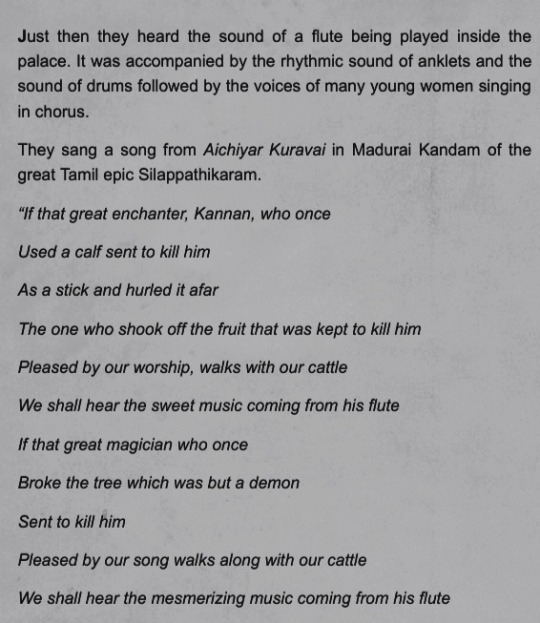
When Karikalan goes to Kadambur, there too we see the preparations for the Kuravai.
While having a heart to heart conversation (as much as someone like Nandini can open her heart), Nandini tells Manimegalai about her hallucinations. According to her, when we love or hate someone intensely, we can see and feel them even in their absence.
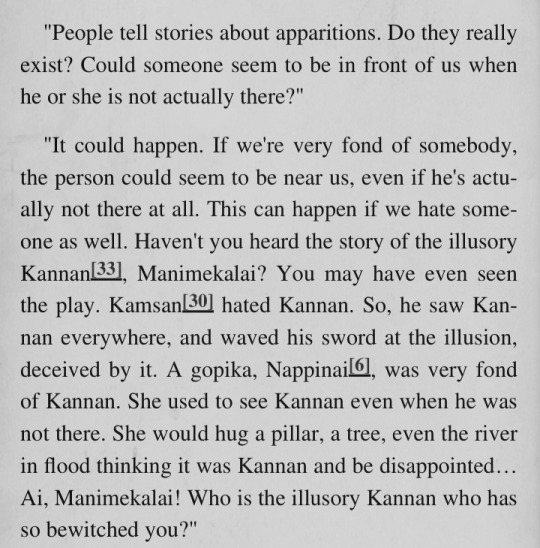
This is something Nandini made up for her consolation, because Nappinnai is never seperated from Krishna. In fact, it said that Vishnu left his divine wives and descended from his seat to be Nappinnai's beloved.
You parted from the eternal Great Flower [Lakshmi] and from the Lady Earth, became a youth, and then united in marriage with the shoulders of the cowherd Pinnai.
In Kuravai Koothu, women sing that Krishna avoids Lakshmi because he is so enamored by Nappinnai.
Is Pinnai of bangled arms so beautiful that He who had won great reputation by measuring the universe, would not look at Lakshmi dwelling in his own breast ?
It is to this Nappinnai that Andal prays to give her an opportunity to get one with Krishna, as her other attempts to wake him up were futile.


Nandini must have heard of the North Indian narratives about viraha unmadini (driven mad by seperation) Radha which were in their infancy then. Nappinnai didn't have the habit of seeing hallucinations - it is Nandini who has mental health issues.
This connection also shows Nandini's guilt about her life's circumstances though they were beyond her control. When Vanthiyathevan tells her that her Krishnan is still waiting for her, she replies that she doesn't deserve it. After marrying Periya Pazhuvettaraiyar, Nandini is never shown praying earnestly - either she is lying about different prayers and austerities or she is using devotion to avoid questions.
Edit: After writing the original post, I thought I will read Thirumangai Alwar's poems because his poetry is specifically mentioned in the chapter which shows Karikalan, Parthibendran and Malayaman going to the port to oversee the loading for goods for Arulmozhi's army. Look what I found:
Pinnai's forehead is a gleaming crescent moon So long ago in battle he subdued seven bulls for her hand And now he owns beautiful Kanchi which is surrounded by beautiful cool ponds of waters Where the sovereign of Pallavas who have the sharp blood stained sword in his hands Who owns a drum with a bitter mouth And the Conch with the roar of the sea Pays his obeisance to his Lord.
(The poem says that the poet's god is the Lord of Kanchi who is worshipped by the Pallava King. The rest are the descriptions of the the god and the king. In PS, crown prince Karikalan is ruling from Kanchi with Parthipendra Pallavan as his vasal)
Very subtle 🤣🤣
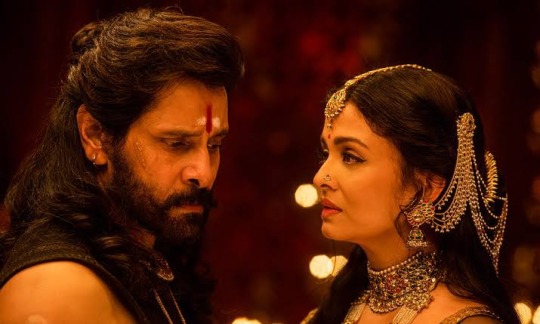
Are you even real, Maya Kanna?
@willkatfanfromasia @sowlspace @vibishalakshman @harinishivaa @thelekhikawrites @hollogramhallucination @thegleamingmoon @whippersnappersbookworm @nspwriteups @jukti-torko-golpo @arachneofthoughts @thirst4light
#ponniyin selvan#ponniyin selvan 2#aditha karikalan#nandini#nandhini#nandini x karikalan#kollywood#ps2#ps1
52 notes
·
View notes
Text

Jain Classes has earned a stellar reputation over the years, establishing itself as a leading coaching institute for SSC exams in Jaipur. The institute's success is a testament to its unwavering commitment to quality education and holistic development of its students.
I am Ritesh Jain Owner & Founder of Jain Classes that is located in Himmat Nagar, Nearest Gopalpura Bypass Bridge Tonk Rd, Jaipur. Having 15 years long experienced mentors are fully versed in every aspect of team recruitments like syllabus, pattern, syllabus, end, cut-offs.
We are going to start New Batch For SSC CGL Pre and Mains on 27 Nov 2023 at 9 :00 AM - 12:00 PM . This is a foundation Batch for SSC CGL Exams. Special Maths classes will be offered by Director and Maths Faculty who have 20+ years exp. as Maths Teacher.
Join Now Immediately Limited Seats !. Want to Get More Information About Courses Fees Connect with us by Call : 099283 63295 or if you want to visit our center get location :
#ssc cgl coaching in jaipur#best ssc coaching classes in jaipur#jain classes#ssc classes in jaipur#best ssc coaching in jaipur#ssc coaching in jaipur
0 notes
Note
♡ i know you've sent me one but. perhaps they can have two kids?? in another lifetime 🥺🥺
Child 1 of ?
Yarne had been expecting at least a kid - continuing the taguel was his job, after all, but... he was expecting just the one, in all honesty.
He almost had a panic attack when the second one was born - the ears came out last, and for a brief moment, he worried that only one of his kids would truly be a taguel - would the double surprise amount to nothing?
Thankfully, when she grew up, Jaine had her father's fluffy ears, with a soft brown coat, much like her mother's hair, and... well, a little tendency for mischief.
Beaststone always in hand, Jaine lived her life as as a "folk hero", living and fighting for the people she grew alongside, and... well, snatching things up from the nobles who had almost doomed her race. Almost.
She had a small little feud with the nobles of nearby towns and villages - she even declared a "feud" with the entirety of the Ylisstol noble class - with, of course, exception of the Exalt - raiding any of their carriages and sharing it with the commonfolk around her.
Her legacy lived on in several generations after her, and, after a chance encounter with a writer of the times, became enshrined in legend as a folk hero, the taguel who fought back against her people's plight, and gave it all to the people of Ylisse - a story of resistance against tyranny, resilience against oppression, and, above all else, pride. Pride in being a taguel, in being Ylissean... in being a hero.
6 notes
·
View notes
Text
The Success of CA Aaditya Jain Stock Market Classes
0 notes
Note
Hey! I'm about to start my medical college journey & am a little confused about the books to read in the first year. Could you please help me? I looked thru your blog & it seems like at your uni they follow a pattern and timeline similar to the Indian medical system, so I thought I'd pop by & ask you for some advice :)
PS: Love your blog, really inspirational!! 🩵 I'm a ex-French learner myself & your posts really inspire me to restart.
Hey, first of all, congratulations and welcome to the Fraternity!
As for the books:
Anatomy
General anatomy : get the bdc or vishram singh general anatomy pdf or get the book from library once you are in college and give a read to important topics and go through the terminologies. You can read general anatomy now, before you go to college or during your foundation course classes
Gross anatomy : The preferred book by students is BDC but i read vishram singh. It has very easy to remember diagrams and things are given in points, i suppose you will feel easier to understand and remember. May be, you can go to a store and see both books and decide (goes for all the books, I'll write here about my personal experience only)
Embryology : Get a langman from senior or if it is okay, buy it too. It's an international book but quite good. You don't have to go through everything but the important topics. Vishram singh embryology is also nice. I got to know about it just few days before exam but it was nice. And please don't neglect embryology. Your friends and seniors will say that it doesn't matter, it does. I suppose i could have got distinction in anatomy if only i had read embryo properly since in paper 1, i couldn't write one answer at all. (Like distinction is not everything, it's just kind of an achievement that can boost you?)
Histology : we read IB singh and mostly, our class notes.
Osteology : Again, class notes. But i guess, poddar is being followed here. I had the pdf. So, see if your college has good teacher who teaches you well, take notes of the bones and revise them. Well, vishram singh gross books also have bone sections and its quite nice.
Physiology
Guyton is the best book. If it is possible for you, get that book either from a senior or from a store. Seniors will tell you otherwise most of the time unless you are in AIIMS or the top colleges. Don't listen to them. I regret not studying standard books, they are gem. But you have to start from initial days and again, make notes of important topics. For exam purpose, you can read your notes and Sembulingam. Thats a nice book. You can keep a pdf. We used AK jain too. But in case you are reading Guyton, making notes and using Sembu, you don't need it. And get the AK jain practical book.
Biochemistry
The standard books are Lippincott and Harper. They are review books. Other than that we followed Satyanarayan or Vasudevan. Satyanarayan is better for exams i feel. Since its like a note. You can keep one of them as physical book and other as pdf. Keep whatever pdf you get actually. And as you proceed, you will get to know about more study materials like Jambulkar. That's nice note but use that as a revision tool.
In our college, for practical in biochemistry, we real our practical copies only. So, i have no idea what other colleges follow for practical
Do join telegram channels, you will get whatever pdf you need and important topics. I will suggest you to read every topic but make notes or proper annotation of important topics and of course, revision of them.
That's all i can remember now. Its not like you need to buy all the books right now itself. See those books in library or get the pdfs and go through random topics and whatever you feel nice, you can buy it. And as i said, keep all pdfs. Mbbs is not like preparing for neet. There will be topics easier to understand or easier to present in exam in different book than yours. But you cannot buy all books so pdf works. And do feel free to ask whatever doubt you have!
PS : This means a lot, thank you! And you can definitely restart your language lessons too.
3 notes
·
View notes
Text
The Vedas also mention a drink called surā. Ritual instructions on preparing it show that it was a complex, grain-based, fermented alcoholic drink. As Charles Malamoud tells us, this drink is in every way the counterpart of soma in Vedic thought. For example, soma is of the gods, surā of humans; soma is light, surā darkness. A later, yet still quite early, Hindu myth relates that surā, also a goddess, arose when the gods and anti-gods churned the milk ocean in order to produce the nectar of immortality. This myth is central to many Sanskrit texts that assign a place to drugs in religion and the cosmos.
Early Hindu law prohibited surā for brahmin males, who were involved in the soma sacrifice. They could not (with one minor exception) ingest the counterpart to soma, as being thus intoxicated would interfere with the body and conduct of a ritually pure Veda scholar and priest. Thus in Hinduism, the prohibition of alcohol is tied to social class (varṇa, sometimes translated as “caste”). Later Hindu legal texts extended this prohibition to other social classes in complex ways: brahmins were teetotalers, some classes were forbidden only grain-based drinks, and other classes could drink whatever they wanted. Buddhists and Jains, both lay and monastics, were prohibited from all alcoholic drinks.
Discussions of drinking as a “vice” were hardly restricted to any one religious tradition, or even to what we would nowadays consider religious contexts. Thus, where specific prohibitions existed, they focused on alcohol, especially on surā, and rules were often relative to religion and class. None of the sources from early periods propose a universal prohibition of alcohol, nor of any other drugs.
In ancient and early medieval India, drug “prohibition” was more a question of people from certain communities or of a certain social status being required to abstain from drugs (or electing to do so), often for reasons we would call religious.
Unlike Greece (wine), ancient Mesopotamia (beer), or China (jiu), ancient Indian high culture did not have an intoxicant that was both commonly used and celebrated in canonical texts. Soma, the ancient drink of the gods, was a purely liturgical preparation from a very early period, and the common drug, alcoholic surā, though equally ancient, was shunned by the religious elite and sidelined in extant discussions. Where kings in ancient India are shown drinking, they tend to be depicted enjoying more luxurious products like imported wine and spiced sugarcane liquors at their feasts. Class and caste factors, and religious affiliation, also played a role in patterns of consumption. The development of other drugs in South Asia is thus best understood in relation to these complex, regionally specific patterns of consumption and representation.
-- The Oxford Handbook of Global Drug History
6 notes
·
View notes